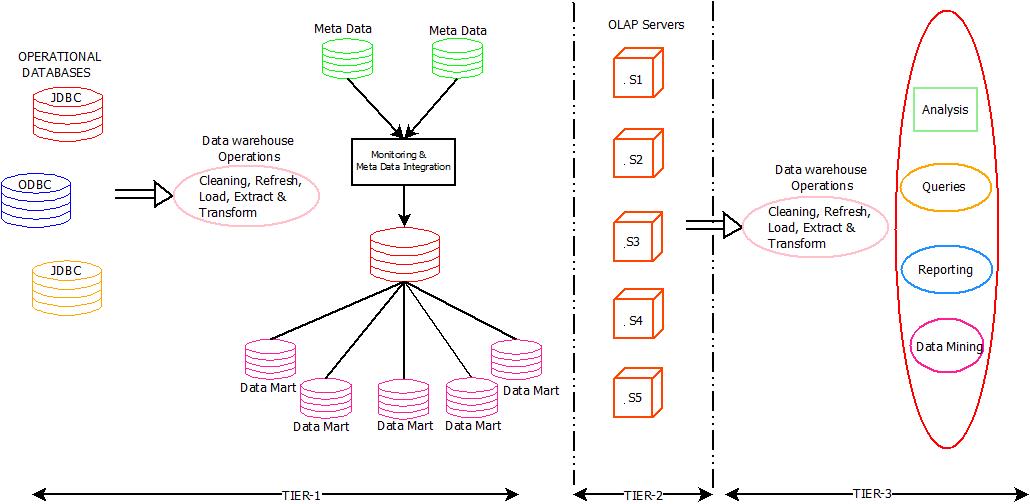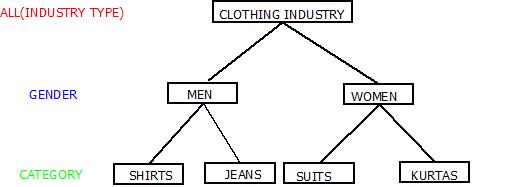Data Warehouse Architecture : Introduction
- An architecture means the conceptual structure and logical organization of components. The data warehouse architecture have its components as the building blocks. These components are- Data sources/Data bases, Data storage devices, Management & Control, Information Delivery etc.
- The data warehouse architecture is the core. Designing and Developing of any data warehouse requires a lot of prerequisites because of its complex nature. It comprises of a number of processes, elements and certainly the components.
- The data warehouse architecture comprises of 3-Tiers. These are:
- Tier-1 : Data Sources.
- Tier-2 : OLAP Servers.
- Tier-3 : Users.

Data Warehouse Architecture
Data Warehouse Architecture : Tier-1(Data Sources)
- It is also known as bottom tier which comprises of data sources such as data bases. Data sources, from where all the data is gathered i.e. from different sources and are merged together.
- Since, the available data is obtained from different data sources(such as ODBC and JDBC), a lot of dirty and unwanted data also comes along. To remove this unwanted data, certain data warehouse operations including cleaning, refresh, loading, transforming and extraction are performed to make the data organized and structured.
- This data is further divided as into meta data based on its category i.e. operational metadata, business metadata and technical metadata.
Data Warehouse Architecture : Tier-2(OLAP Servers)
- Online Analytical Processing(OLAP) servers resides in the middle layer. The major function of OLAP servers is to provide response to user requests. This response must be fast enough to provide smooth user experience.
- Another feature of OLAP servers is to handle concurrent user request at a particular interval of time because of its robust nature.
Data Warehouse Architecture : Tier-3(Users)
- The top-tier in the architecture of data warehouse interacts directly with its users. This is responsible for the application interface on which user request are fixed using certain queries. Any response generated by OLAP servers through its data mining abilities are presented to the user in the form of :
- Hence, any data warehouse will be comprising of all these layers. The performance of the data warehouse totally depends upon how it’s architecture is designed. If every requirement is taken into consideration before designing the data warehouse architecture, then it’s performance will be of top notch.
Concept Hierarchy : Data Warehouse Architecture
- Concept hierarchy can be defined as the process of mapping or relating, lower dimensional data to higher dimensional data in a data warehouse. This concept is used in generating data marts and meta data repository.
- For example : In clothing industry, concept hierarchy can be used as:

Concept Hierarchy : Data Warehouse Architecture